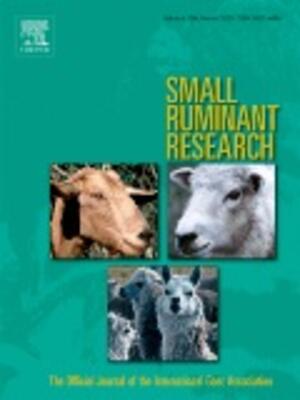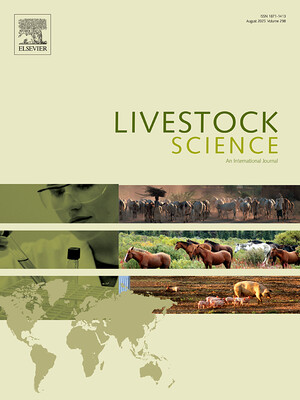
Survival analysis of genetic and non-genetic factors influencing lamb survival of different sheep breeds
Abstract
Data records of 3,800 Dorper, Dorper × Menz and Menz lambs born from 2011 to 2023 were used to determine non-genetic factors and to estimate variance components of lamb survival at Debre Birhan Agricultural Research Center, Ethiopia. The traits investigated were lamb survival from birth to 90, 180, 365 and 90 to 180 days of age. The data was subjected to analysis using the Weibull proportional hazard model. The mortality rates of lambs at different age intervals (90, 180, 365, and 90 to 180 days) were determined for three breeds: Dorper, Dorper × Menz, and Menz. The respective mortality rates for each breed were as follows: 23.96, 36.85, 48.72, and 15.47% for Dorper; 23.64, 37.33, 56.32, and 17.00% for Dorper × Menz; and 12.98, 23.44, 39.31, and 11.44% for Menz respectively. Breed of lamb, year of birth and lamb weight at birth were significantly (P<0.05) affected risk of lamb mortality during all the periods studied. On the other hand, except from 90 to 180 days of age, lamb inbreeding coefficient, birth type, parity of dam and season of birth were significantly (P<0.05) affected lamb risk of death at all studied periods. However, sex of lamb had a significant (P<0.05) effect during birth to yearling and weaning to six months of age. Dorper and Dorper × Menz lambs had higher (P<0.05) risk of death compared with the local breed (Menz lamb). The likelihood of mortality significantly decreased as the weight of the lamb at birth increased, transitioning from very low values (less than 2 kg) to higher values (4.00 kg and above). Lambs with a higher inbreeding coefficient (above 6.25%) exhibited the highest risk of death (2.13) compared to lambs with a zero inbreeding coefficient. Lambs born from younger (nulliparous) and older dams (5 parity and above) faced a higher risk of death. The heritability estimates for lamb survival during the birth to yearling age period ranged from 0.004 for Menz to 0.25 for Dorper, indicating variability in the genetic influence on this trait between the two breeds. While direct selection for lamb survival may be challenging due to low heritability specifically for Menz sheep, implementing measures such as improved lamb care, accounting for seasonal variations, and indirect selection based on birth weight can lead to notable improvements in lamb survival rates within the research center. The significant and alarming lamb mortality rates observed in the research center necessitate the immediate implementation of measures and strategies.
Citation
Besufkad, S., Abebe, A., Getachew, T., Goshme, S., Bisrat, A., Abebe, A., Zewdie, T., Alemayehu, L., Kebede, A. and Gizaw, S. 2024. Survival analysis of genetic and non-genetic factors influencing lamb survival of different sheep breeds. <i>Small Ruminant Research</i> 232: 107206.









